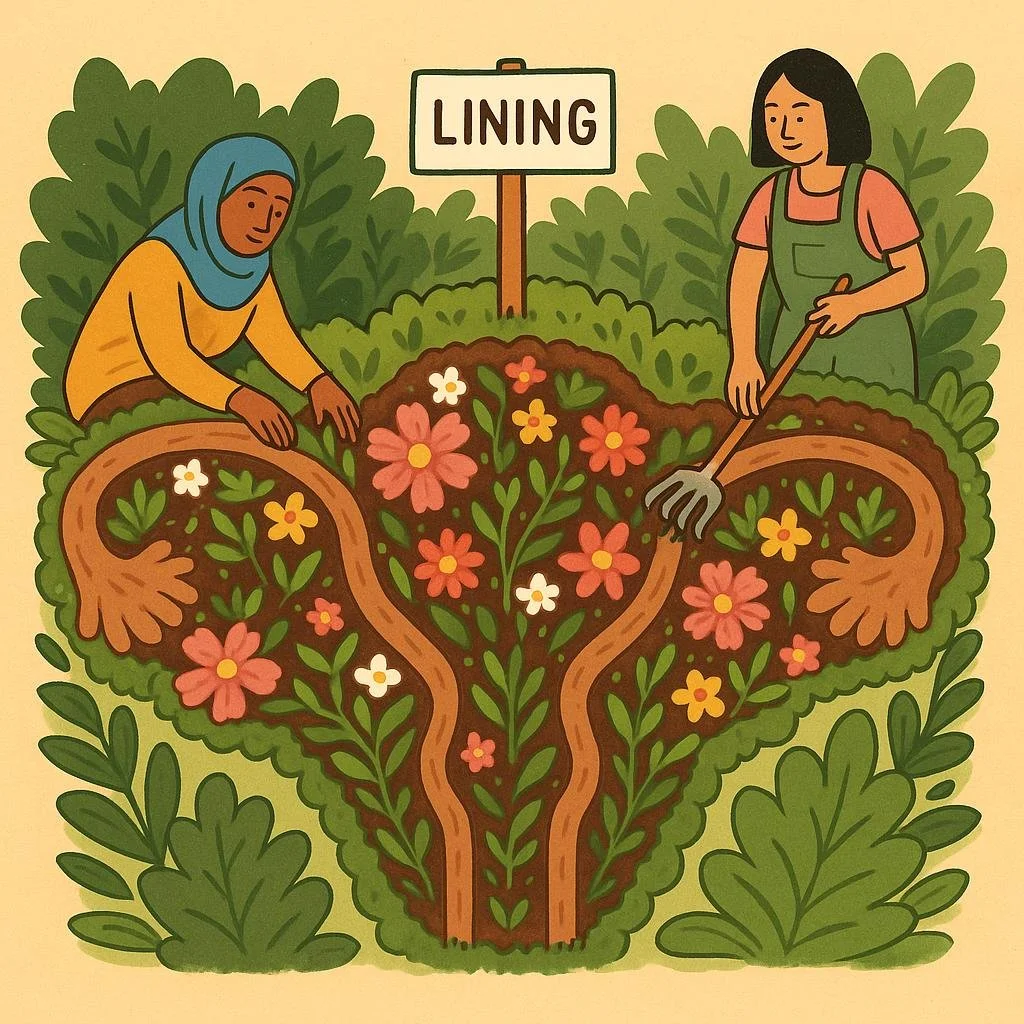The Menstrual Cycle: Your Monthly Programming
Spoiler: It’s not always 28 days—and that’s okay.
We’re taught from the start that a “normal” menstrual cycle is 28 days. But that’s like saying every person should be 5'6" with brown eyes and a love for iced coffee. It’s a baseline, not a blueprint—and your body has its own version of normal.
This guide breaks down what actually happens in a menstrual cycle, how long it can last, and what might throw it off (hint: life happens). So whether you’re regular to the day or feeling like your uterus runs on vibes, we’re here to explain what’s going on behind the scenes — and when to actually worry.
First Things First: What Is a Menstrual Cycle?
Your menstrual cycle is the full monthly process your body goes through to potentially get pregnant. Even if that’s not your goal, your cycle is still doing its thing every month — prepping, releasing, cleaning up, and starting again.
The cycle starts on the first day of bleeding, which is called Day 1, and ends the day before your next period begins.
The Four Phases — and What They Actually Mean:
Menstrual Phase (aka: The Shedding)
When: Starts on Day 1 of your cycle — the first day of bleeding.
What’s Happening: If there’s no fertilized egg, the body sheds the uterine lining that it built up all last cycle. That’s your period.
Think of it as: The garden from last cycle didn’t get used — so now it’s being cleared out. Out with the old to make room for the new.
Heads-up: This phase overlaps with the next one, the follicular phase, because your body is already getting started on the next round.
Follicular Phase (aka: The Growing Season)
When: Also begins on Day 1 and lasts until ovulation (usually around Day 14).
What’s Happening: Rising estrogen levels signal the body to start rebuilding. Once that old lining is fully shed, a new one begins to form. The seeds are being planted, and the garden is starting to regrow.
Meanwhile, your ovaries begin maturing follicles — little sacs that each hold an egg (think of them like eggs in tiny water balloons). One follicle becomes the dominant one — the favorite child, the bell of the ball, the crowned Miss Ovulation — and gets selected for release.
Think of it as: The planting phase. The seeds are in, the garden’s growing, and everything is gearing up for a possible pregnancy.
Ovulation (aka: Release Day)
When: Usually occurs around Day 14 in a 28-day cycle, but timing can vary.
What’s Happening: The dominant follicle bursts and releases its egg, which travels into the fallopian tube. This is your fertile window — the time when pregnancy is most likely to occur.
Think of it as: The big reveal. The egg makes its entrance, hormones (especially estrogen) peak, and many people feel more energized, flirtier, and downright glowy.
Fun fact: You might notice a slight rise in body temperature, a shift in cervical mucus, a one-sided twinge called mittelschmerz (literally “middle pain”), or even a little bit of light spotting. That’s your ovary doing the damn thing — but it doesn’t always feel pleasant. Heads-up: Some people get very light spotting during this time, and that’s usually normal.
Luteal Phase (aka: The Garden Party)
When: From ovulation until the start of your next period (typically about 14 days).
What’s Happening: The now-empty follicle turns into a structure called the corpus luteum (aka: your supportive cyst — think of it as the hormonal hype squad, cheering the uterus on from the sidelines). It releases progesterone to keep the uterine lining stable and ready — just in case a fertilized egg arrives.
Think of it as: The garden is getting its final touches: weeds pulled, hedges trimmed, everything made as inviting as possible to catch the eye of a potential embryo (fertilized egg). Now we wait. If no embryo checks in, the hormones drop, the lining starts to destabilize, and the whole cycle resets back to the top.
Clues you're here: Some people feel bloated, moody, or fatigued as progesterone rises — a.k.a. PMS territory.
What Can Throw Off Your Cycle?
Your cycle isn’t broken if it doesn’t run like a Swiss watch. Life isn’t that tidy — and neither is biology.
Even if your cycle is usually predictable, certain things can delay ovulation, shorten your luteal phase, or make your period show up late (or not at all). That doesn’t automatically mean something’s wrong — it might just mean your body is responding to what’s going on around you.
Here are some common cycle disruptors:
- Stress
- Illness (like a cold or COVID)
- Travel
- Major life changes
- Extreme exercise or weight changes
- Starting or stopping birth control
Sometimes your period skips a month. Sometimes it comes early. Sometimes it’s just weird. One off-cycle doesn’t mean your whole system is off — it just means you’re human. Keep an eye on patterns, not one-offs.
However, if you start noticing consistent or persistent changes — like all your friends are gabbing about syncing up and you haven’t seen your period in months, or you’ve been bleeding nonstop for a full month — that’s definitely something that deserves the attention of a gynecologist. Better to check in than tough it out.
Final Thought: You’re Not Broken — You’re Cyclical
Your cycle isn’t a machine. It’s a rhythm. And like any rhythm, it can shift with the tempo of your life.
Whether you’re tracking it for fertility, symptom management, or just curiosity, understanding how it works gives you power — not just to predict your period, but to know yourself better.
Because this isn’t just about when you bleed. It’s about how your body moves through each month, one quiet, powerful phase at a time)

